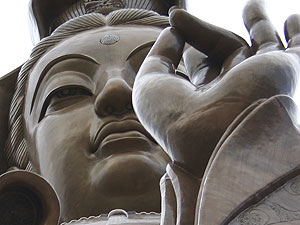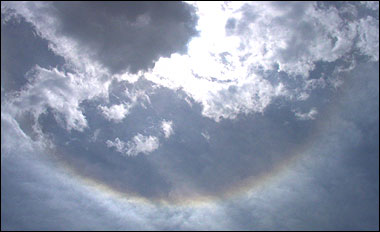The Blessed Buddha once said:
When a Bhikkhu develops the Ways to Force that is enriched with
concentrated Energy, constructed by effort, by thinking:
In this way will my Energy, neither be too slack nor too tense, it will
neither be constricted internally, nor scattered externally, then he
dwells experiencing both what is in front & what is behind, so above,
so also below, so by day, so also at night! Therefore, with a mind all
open & unrestricted, he develops the dazzling bright mind, which is
pervaded by luminosity... However:
What is Energy that is too slack? Energy joined with indifference. This is Energy, that is too slack...
What is Energy that is too tense? It is restless & agitated Energy. That is Energy, that is too tense...
What is Energy that is constricted internally?
It is Energy joined with lethargy & laziness. Inwardly choked!
What is Energy that is scattered externally? Energy directed & diverted externally for the 5 sense pleasures...
This is called Energy that is scattered & distracted externally...
How does one dwell experiencing both the front & what is behind?
The perception of front, & back, is well attended to, & thereby well
comprehended, well considered, & penetrated by understanding...
How does one dwell seeing as below, so above; as above, so below?
One reviews this very frame of body upwards from the soles of the
feet, & downwards from the tips of the hairs, enclosed in skin, as
full of many kinds of impurities: There are in this body: Head-hairs,
body-hairs, nails, teeth, skin, flesh, sinews, bones, bone-marrow,
kidneys, heart, liver, pleura, spleen, lungs, intestines, mesentery,
vomit in the stomach, excrement, bile, lymph, pus, blood, sweat,
fat, tears, mucus, saliva, snot, fluid of the joints, and urine...
So does one come to see both, what is above, and what is below!
How does one dwell by day, so at night; as at night, so by day?
Here, at night a Bhikkhu trains the Ways to Force, that is enriched
with concentrated Energy, constructed by effort, using the same
techniques, qualities, features, & aspects, as he trains during the day.
And how, does one dwell with a mind, that is all open & unrestricted,
a dazzling bright mind, which is pervaded by luminosity...?
Here, always the perception of day-light is well attended to & well
resolved upon by determination. It is in exactly this way, that one
dwell with a mind, that is all open & unrestricted, a dazzling bright
mind, which is pervaded by its very own luminosity...
Mental Energy!
More on Energy (Viriya):
http://What-Buddha-Said.net/
http://What-Buddha-Said.net/

Energy is a Way to Suprahuman Force!
http://What-Buddha-Said.net/
http://What-Buddha-Said.net/
Energy is a Way to Suprahuman Force!
More on the 4 Feet of Suprahuman Force!
http://What-Buddha-Said.net/
http://What-Buddha-Said.net/
http://What-Buddha-Said.net/
http://What-Buddha-Said.net/
http://What-Buddha-Said.net/
http://What-Buddha-Said.net/
http://What-Buddha-Said.net/
http://What-Buddha-Said.net/
http://What-Buddha-Said.net/
http://What-Buddha-Said.net/

http://What-Buddha-Said.net/
http://What-Buddha-Said.net/
http://What-Buddha-Said.net/
http://What-Buddha-Said.net/
http://What-Buddha-Said.net/
http://What-Buddha-Said.net/
http://What-Buddha-Said.net/
http://What-Buddha-Said.net/
http://What-Buddha-Said.net/
http://What-Buddha-Said.net/
Source (edited extract):
The Grouped Sayings of the Buddha. Samyutta Nikāya. [V:278]
section 51: The 4 Forces: Thread 20: Analysis of the Ways.
The Grouped Sayings of the Buddha. Samyutta Nikāya. [V:278]
section 51: The 4 Forces: Thread 20: Analysis of the Ways.
Energy is Force!
Have a nice & noble day!
Friendship is the Greatest! Bhikkhu Samāhita _/\_ ]
http://What-Buddha-Said.net

 I
would like to touch upon what I believe are the advantages of the
Buddhist ethical standard over secular viewpoints but first I want to
make a brief comment about translation relating to our ethical
guidelines.
I
would like to touch upon what I believe are the advantages of the
Buddhist ethical standard over secular viewpoints but first I want to
make a brief comment about translation relating to our ethical
guidelines. It
strikes me just how many times I hear people mention this little voice,
sometimes by the person with a tough decision to make, or maybe the
person giving up a bad habit, it always seems that this internal
communicator has an opinion on the matter. Just how much more then does
this voice influence us when we are practicing, whether that is in our
formal meditation or in our cultivating the ethics taught by the Buddha.
It
strikes me just how many times I hear people mention this little voice,
sometimes by the person with a tough decision to make, or maybe the
person giving up a bad habit, it always seems that this internal
communicator has an opinion on the matter. Just how much more then does
this voice influence us when we are practicing, whether that is in our
formal meditation or in our cultivating the ethics taught by the Buddha.